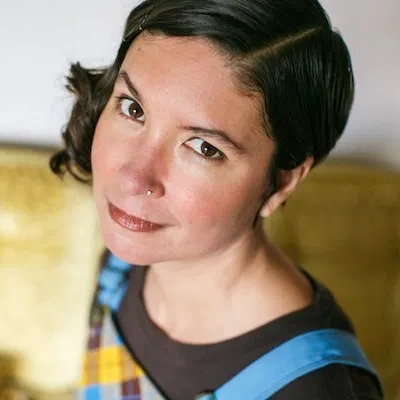
Today’s post is by regular contributor Susan DeFreitas (@manzanitafire), an award-winning author, editor, and book coach. She offers a first 50-page review on works in progress for novelists seeking direction on their next step toward publishing.
It’s one of the things we love most about fiction, the illusion that we’re not just reading a story about this character, we actually are this character.
Brain science tells us that when we read about a character doing or experiencing something, our brains light up in much the same way as if we were doing or experiencing that thing for ourselves—and nowhere is this illusion more complete than in scene.
Scene is where the pace of the story slows to “real time,” and we’re privy to every word, gesture, and sensory detail. Not only does this allow us to inhabit the story in a visceral way, it sends a clear message that what’s happening here is important—important enough that it cannot simply be narrated. Listen, the author is saying. You really just have to experience this for yourself.
Scene is also where the emotions of the story are at their most intense—the place where, to paraphrase Ursula K. Le Guin, the reader leans forward and bites her lip. Scene is the place in the story where we find tears welling up in our eyes, or find ourselves scowling at the antagonist’s unconscionable cruelty.
That’s because, no matter how much the author tells us about the characters, scene is where characters show us who they really are. And in doing so, they’re often unpredictable—which of course only adds to the appeal. When we read scenes where the characters surprise us, we want to keep reading, to see what wild thing they’re going to do next.
Powerful scenes make for powerful stories, and as both a writer and book coach, I’ve found that these are three key tactics for achieving them.
1. Dramatize turning points
To articulate means to give shape or expression to something, such as a theme or concept—it also means to unite by means of a joint. Maybe that’s why dramatizing the turning points of a story, its joints, is one of the strongest ways to give shape and expression to the story as a whole.
Situating scenes at the turning points of your story also ensures that something will actually occur in these scenes, beyond sharing the basic exposition, characterization, and conflicts. Which is to say, situating your scenes this way helps to ensure that there will be a major development within that scene that moves the story forward.
Often, writers have no real intentionality about where they place their scenes, or what work they’ll actually perform for the story. They write scenes to explore a situation or setting, to get a sense for the dynamics between the characters, to explore the conflicts between them—and there’s nothing wrong with that, especially in an early draft.
But powerhouse scenes are made of stronger stuff: they do all of this while also dramatizing the story’s major developments, and articulating its contours as a whole.
2. Employ reversals
Screenwriting guru Robert McKee holds that every scene must employ a reversal of some type, be it a reversal of power or a reversal of expectation.
A reversal of power is a scene in which one character holds more power than the other when the scene begins and that dynamic is reversed by the time the scene ends. A reversal of expectation is a scene in which the character goes in expecting one thing to happen but something else happens instead.
It’s easy to see how well this technique works by watching movies: Reversals keep us engaged by providing a regular shot of dopamine in the form of surprise, a sense that the story isn’t just going to settle down into ho-hum predictability.
It’s a technique that works just as well for fiction, and part of the power of this tactic, to my mind, is the help it affords the writer. How do you know when you’ve pushed the conflicts in your scene out far enough? When you’ve achieved some type of reversal.
3. Set it up, then step back
You’d think that, because scene is the place where the reader experiences the emotions of the story most viscerally it’s also the place to include a lot of information about what the POV character is feeling. But the opposite is actually true.
Remember, scene is the place where our brains most fully buy into the illusion that we’re not just reading the story, we’re living it. And nothing breaks that illusion more reliably than the author butting in to tell us what’s going on inside the character’s head.
Doing so is appropriate at times—necessary, even. But generally speaking, the best time to let the reader know what the character is feeling is not during the scene itself, but before that scene begins.
For instance, there’s a powerful scene in Midnight at the Bright Ideas Bookstore in which the protagonist sees the father she’s been estranged from for the first time in decades. As the character is driving to her father’s cabin, the author shares with us, for the first time, the extent of their conflicts when she was a teen, including a key detail: When she dared to push back on her father’s strict rules, he retaliated by removing her bedroom door.
Then we get the scene itself—a powerful scene, alert to the real-time nuances of dialogue, diction, tone, and body language as the protagonist and her father have their long-delayed reckoning. But the author doesn’t have to butt in to tell us why the character is so angry in this scene, how a certain line of the father’s denies the truth of his past behavior, or the way that makes her feel. We can feel all that for ourselves, because the author has given us the emotional context beforehand.
Scene is one of the most powerful tools in the writer’s toolbox. Placed intentionally, crafted well, and set up via emotional context and backstory, they may in fact be the most powerful tool of them all.
What’s a powerful scene from a novel you’ve read that stayed with you over time? And why do you think that scene had so much power?

Susan DeFreitas is the author of the novel Hot Season, which won a Gold IPPY Award, and the editor of Dispatches from Anarres: Tales in Tribute to Ursula K. Le Guin, a finalist for the Foreword INDIES. An independent editor and book coach, she specializes in helping writers from historically marginalized backgrounds, and those writing socially engaged fiction, break through into publishing.

Great article! I like to think of each scene ending with a metaphorical trap-door through which the reader falls into the next scene. Either by wondering (of the protagonist), Well how are you going to get out of that? Or That didn’t go so well, what are you going to do now? This strikes me as being at the heart of that much-sought after magic: page-turning.
So true, Malcom–that’s why Jennie Nash trains her book coaches to think about scenes in terms of causality. Her trick for figuring out what each scene leads to is to ask yourself, “And so?” and then have the next scene answer that question. It doesn’t work in absolutely every circumstance, but I think it’s brilliant advice.
I totally agree with both of you. But I think we have a pacing problem if we have a succession of scenes without a bit of a slowdown – time to prepare for the next scene!
Thank you for this. I’m going to check and make sure I don’t have any thoughts in the middle of my confrontation scenes!
Glad you found it useful, Karen. =)
[…] DeFeitas lists 3 key tactics for crafting powerful scenes, Lincoln Michel warns us against the five-car metaphor pile-up, and C.S. Lakin describes how […]